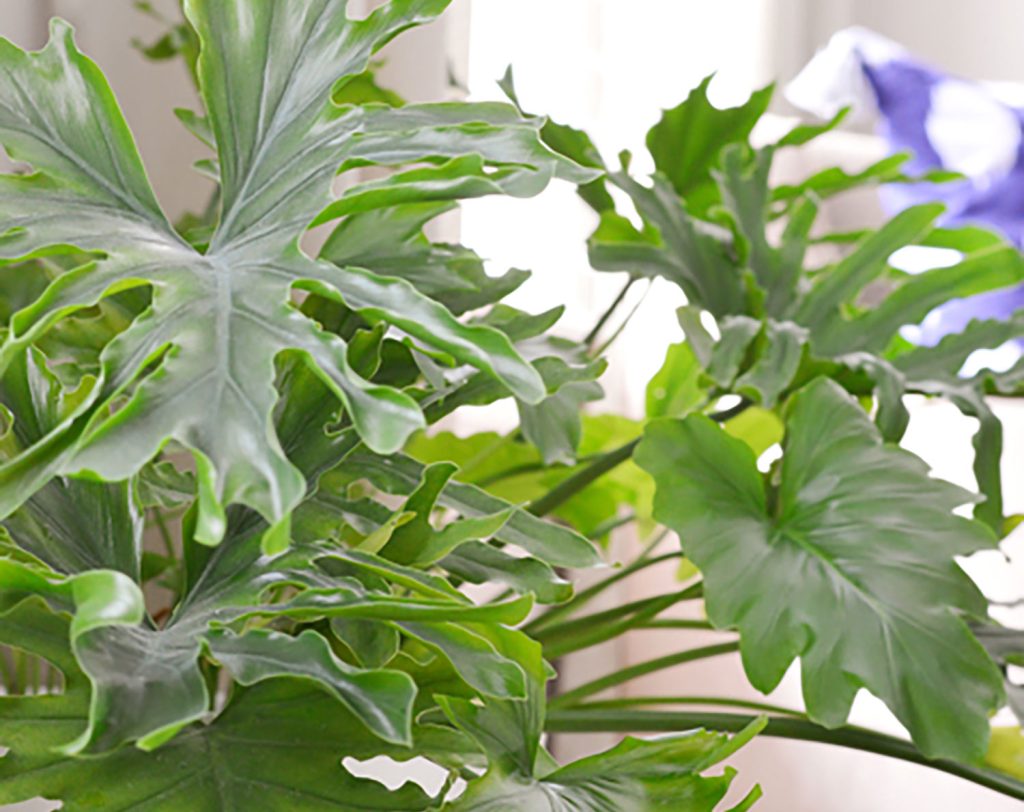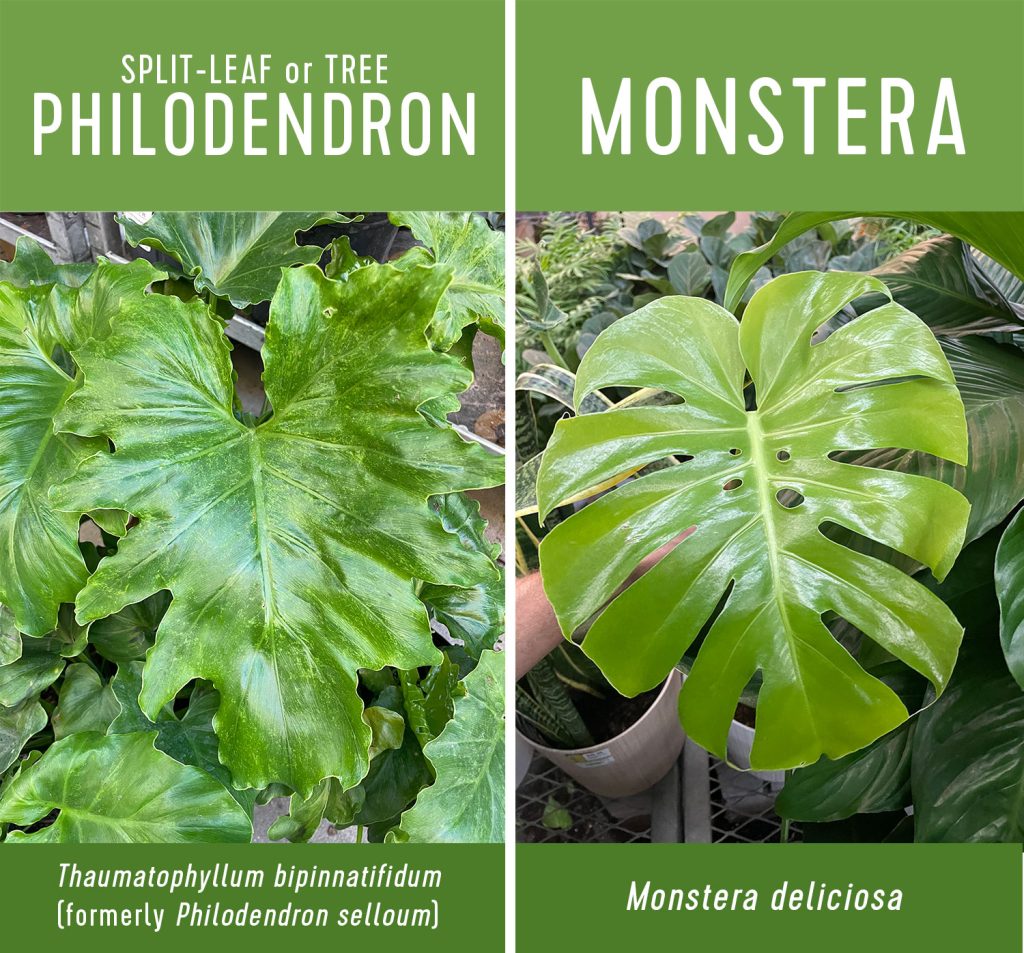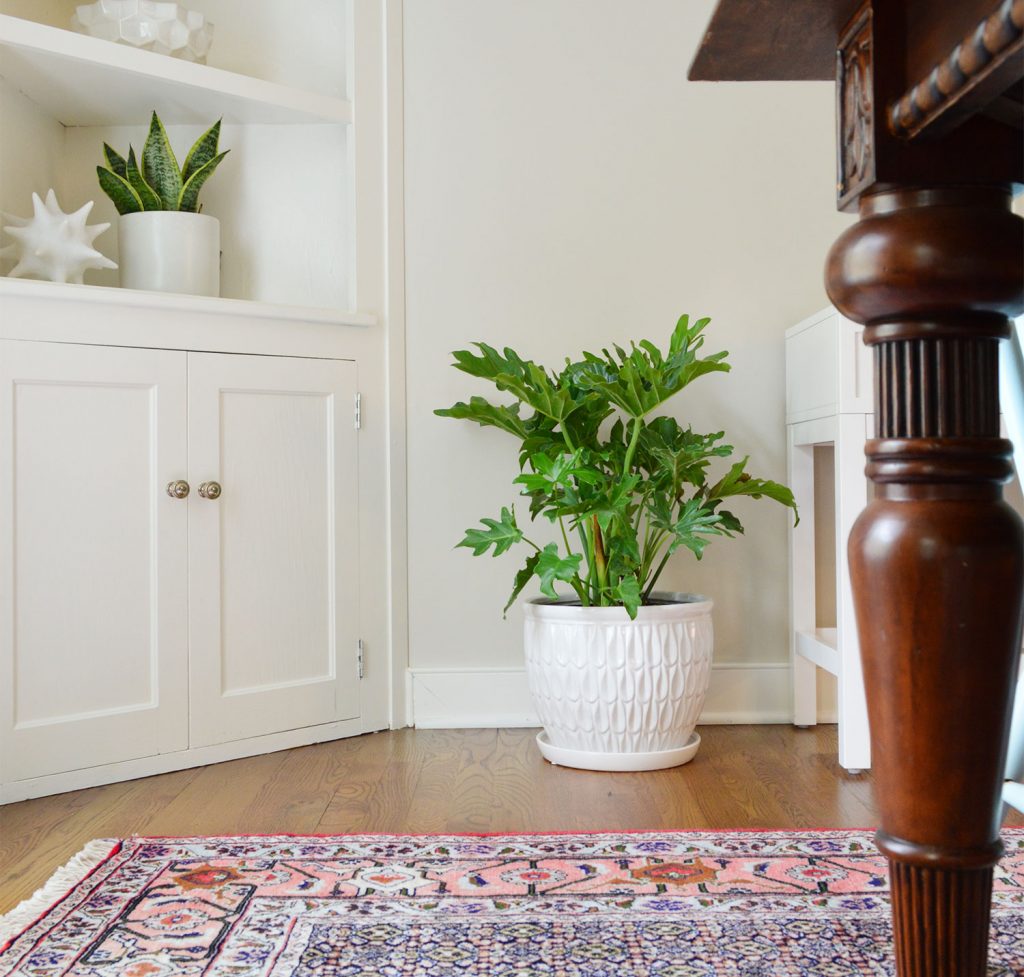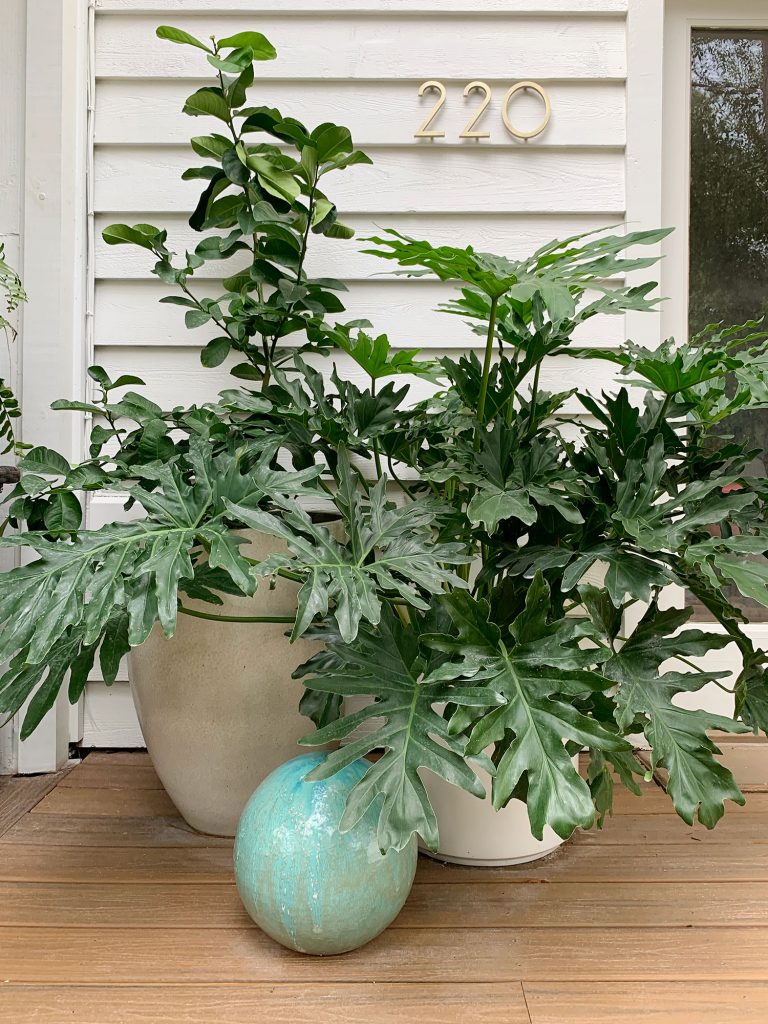[ad_1]
The tree philodendron, which was formerly known as the hope philodendron or philodendron selloum, is one of our FAVORITE houseplants. It’s a low-maintenance, tropical plant that adds tons of visual impact. It’s also a great alternative to a fiddle leaf fig.

What Is A Tree Philodendron?
The tree philodendron (Thaumatophyllum Bipinnatifidum) is a large tropical plant native to South America, primarily Brazil. However, it isn’t even technically a philodendron anymore! In 2018 it was reclassified out of the genus Philodendron and into the genus Thaumatophyllum due to its size and DNA. However, it is still colloquially referred to as a philodendron. You may still find it listed as a Philodendron Hope or Philodendron Selloumm, but Tree Philodendron is now the preferred name.

It’s known for its distinctive split leaves and long stalks. Like all tropical plants, it enjoys warm and humid environments, and when used as an indoor plant, it will thrive in medium-to-bright areas of your home. It’s an affordable fast-growing plant that is sold in a variety of medium to large sizes. It’s a great option if you’re looking for a high-impact houseplant that’s less expensive and bushier than a fiddle leaf fig. We’ve also found them easier to care for!
What As A Tree Philodendron Also Known As?
Before the tree philodendron was reclassified, it was popularly known as philodendron hope selloum. The “selloum” part of this common name is a holdover from another outdated scientific classification. Philodendron selloum was once considered a separate plant species, but it was later combined with Philodendron bipinnatifidium before being wholly reclassified to Thaumatophyllum bipinnatifidum in 2018. Confusing, right?
Tree Philodendron vs Monstera
The confusion doesn’t stop there though! This plant is also sometimes referred to as a split-leaf philodendron or lacy leaf philodendron. The name split-leaf philodendron is often mixed up with a monstera deliciosa, but these are not the same plant. We even saw them mislabeled at our local garden center the other day! Both plants have split leaves, but the tree philodendron’s leaves tend to curl or “frill” along the edges more. You can see the differences below:

Tree philodendron is the current preferred name because it better reflects its ability to grow tall and tree-like in its natural environment. As a houseplant, it will likely remain compact and bushy like most species of philodendron, which is why it still retains philodendron in its common name. Bottom line: it’s best to call this a tree philodendron, but be aware that there may be outdated references to its other names out there.
How to Care For A Tree Philodendron
Tree Philodendrons add a tropical look to your home but are less picky than other tropical houseplants, like the infamous fiddle leaf fig. Here’s what you need to know about caring for one:
Tree Philodendron Placement
These plants do best in rooms with medium-to-bright, indirect light. They thrive in sunny dappled rooms, but we’ve seen them survive in medium-light spaces too. They’re less needy and fickle than other tropical plants in this way. Just try to avoid too much direct sunlight because it can cause burn spots on the leaves. Also, since it grows towards the light source, try to rotate your plant regularly for an even shape.

Watering a Tree Philodendron
Tree Philodendrons prefer slightly moist soil, so give it a light watering once per week. It doesn’t tolerate drought, so try not to let the soil fully dry out. Use your finger or a basic moisture meter to check the top 2 inches of soil. If it’s dry, give your philodendron a drink. Just make sure your pot has proper drainage. Sitting in water can cause the roots to rot.
Dusting
Because of its large wide leaves, you should regularly dust your Tree Philodendron with a cloth or damp rag. Not only does it keep your plant looking its best, but it also encourages the photosynthesis process to keep it healthy. You can also purchase plant wipes or spray to really make them shine!
Pruning
Remove yellow or brown leaves by cutting them off close to the base using sharp pruning shears. This keeps your plant looking its best while allowing it to focus energy on new growth. It is a hardy plant that can also be pruned to maintain a certain size or shape.
Repotting
Tree Philodendrons may need repotting after 12-24 months, depending on their size and your goals for the plant. If you want it to get bigger, repot it into a vessel up to 2″ larger than its current one. If you want it to stay the same size, you can put it back in the same pot, but take the opportunity to trim dead roots and provide fresh soil.
Other Tree Philodendron FAQs
How big does it get?
An indoor tree philodendron can get up to 6 feet tall and wide with leaf stalks up to 3 feet long, depending on the size of its pot. It can be kept smaller by keeping it in a smaller pot. Planted outside, they are known to grow up to 15 feet tall!
Can I Plant A Tree Philodendron Outside?
Yes, in certain climates. Tree philodendrons can be grown outside in zones 9 – 11 (you can find your Plant Hardiness Zone here). We live in Zone 9a and have several Tree Philodendrons planted in our yard and on our porch. Note: the address numbers in the photo below have been altered for privacy reasons.

Our outdoor tree philodendrons have done great, apart from the recent deep freeze that damaged some of the larger leaves. They all survived but will need to do some regrowing to regain their size. Here are the steps we took to protect our plants from the freeze.
Are they expensive?
For their size, tree philodendrons are a nice budget-friendly houseplant. For reference, a 2-gallon philodendron is currently $17 at the home improvement store. A similar-sized fiddle leaf fig is $25 and in some fancier garden centers can even be $99+. Tree philodendron prices typically depend on the age and size of the plant, but overall they’re a great option for a large plant that doesn’t drain your wallet.
What are other types of philodendrons?
There are nearly 500 species of philodendrons and many are popular houseplants because they thrive in typical household temperatures and humidity levels. Philodendron loosely translates to “tree lover” because many species climb trees in the wild. Here is a good round-up of various philodendrons you may recognize. Most are small-to-medium-sized tabletop plants with distinct tropical leaves.
More Plant Guides
If you’re looking for more information on some of our favorite plants (real and faux!) check out some of these posts below:
*This post contains affiliate links, so we may earn a small commission when you make a purchase through links on our site at no additional cost to you.
More posts from Young House Love
[ad_2]
Source_link


